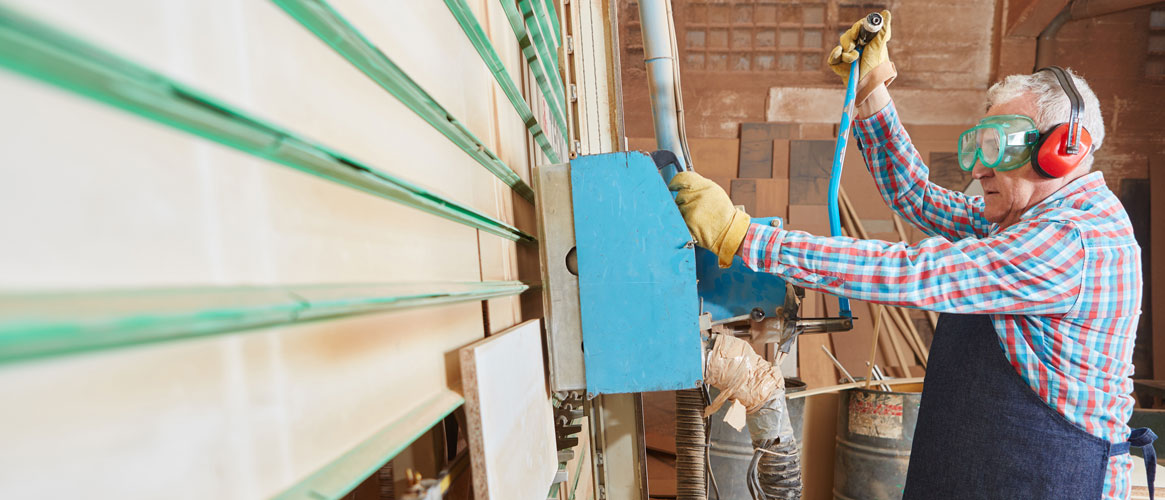Wood millers and manufacturers use powerful cutting machines to cut, route, and shape wood materials to create different products. The most frequent injuries to wood industry workers include trauma to hands and fingers from blades and machinery, lower back injuries due to lifting heavy objects, and strains and sprains due to frequent, repeated movements.
Dress for the work you do. Wear close-fitting clothing, remove jewelry, and tie back your hair when working around machinery. Wear gloves to handle stock and product, but don’t wear them around moving machinery. Wear protective footwear to protect your feet from heavy products and stock, and slip-resistant soles to prevent slips, trips and falls. Safety glasses and a face shield protect your eyes and face from flying dust and wood particles. Wear hearing protection when you enter plant areas or operate machinery that has unsafe noise levels.
Get training on all of the equipment that you operate. Powered cutting and tooling machines, cutting tools, and fasteners can cause cuts, punctures, amputations and even death. Know how to operate them safely. Practice lockout/tagout when you need to inspect, maintain, or clear jams on machinery. Moving and cutting parts should have guard protectors to keep your hands and other body parts away from them. Also guard areas that could allow materials such as wood chips and splinters to fly out of the machine. Only operate equipment if the emergency stops and safety devices are working properly.
To prevent strains and sprains to your arms, shoulders, and abdominals, keep your work close to your body for the most comfort and power. Store stock and materials between knee and shoulder height for easier, safer access. Use proper lifting techniques by keeping your back straight and powering your moves with your legs. Avoid lifting heavy loads. Use lifting equipment, dollies, forklifts (with proper training) and/or conveyors to move heavy items. Ergonomic injuries may be caused by fatigue and overuse. Take frequent microbreaks to give your body a rest. Rotate your tasks throughout the day to prevent overuse of your muscles.
Keep the work environment safe by providing adequate lighting for safe machinery operation and movements around the plant. Stay on top of housekeeping to make sure that spills, dust, and debris are cleaned up immediately. Make sure there is adequate air movement and ventilation to remove wood dust from the work environment. Wear a respirator for dusty jobs to prevent lung irritation and illnesses. Isolate or enclose machinery that is too noisy or vibrates. Properly store chemicals and wastes to prevent fires and incompatible mixing. Have someone trained in first aid, a first aid kit, and charged fire extinguishers on site.
